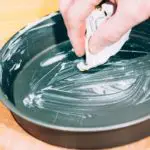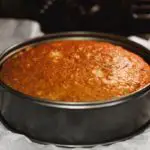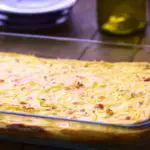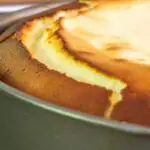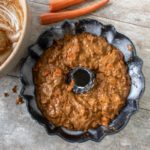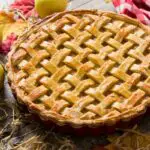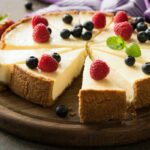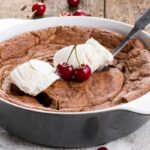Ready to start baking your next cake? Let’s set things off on the right foot by greasing your baking pan.
Knowing how to grease a pan will save you plenty of headaches in the kitchen and ensure your baked goods always come out on top.
Whether you’re using a paper towel, a pastry brush, oil, or flour, there are plenty of ways to set your pan (and your cake) up for success.
A greased pan is essential for baking the perfect cake.
So, if you want to prevent your culinary creation from sticking to the sides, get your cakes ready for action and stick with us to learn how to grease pans – the right way.
Why Should You Grease A Pan?
Have you ever tried baking a cake without greasing? If you have, you’ve probably ended up with what can only be described as a complete disaster.
Without adequate greasing, your cake may end up sticking to the sides of the pan, with a sticky mess of baked goods clumped at the bottom of the pan.
Prizing your creation off of a dry pan is messy, sticky, and anything but delicious. There are plenty of ways to grease baking pans.
Whether it’s with baking spray, nonstick cooking spray, a silicone baking mat, or butter, lather your pan up with plenty of grease to avoid a culinary flop, and get that well-risen, delectable cake you’ve been dreaming of.
How To Grease A Pan
Let’s explore a few tips and tricks for greasing your pan. There are a few ways to grease a pan, and we’ll take a look at the most common methods below.
So, get ready to start baking your cakes or brownies, and follow these tips below for the perfect cake bake.
Butter/Shortening And Flour
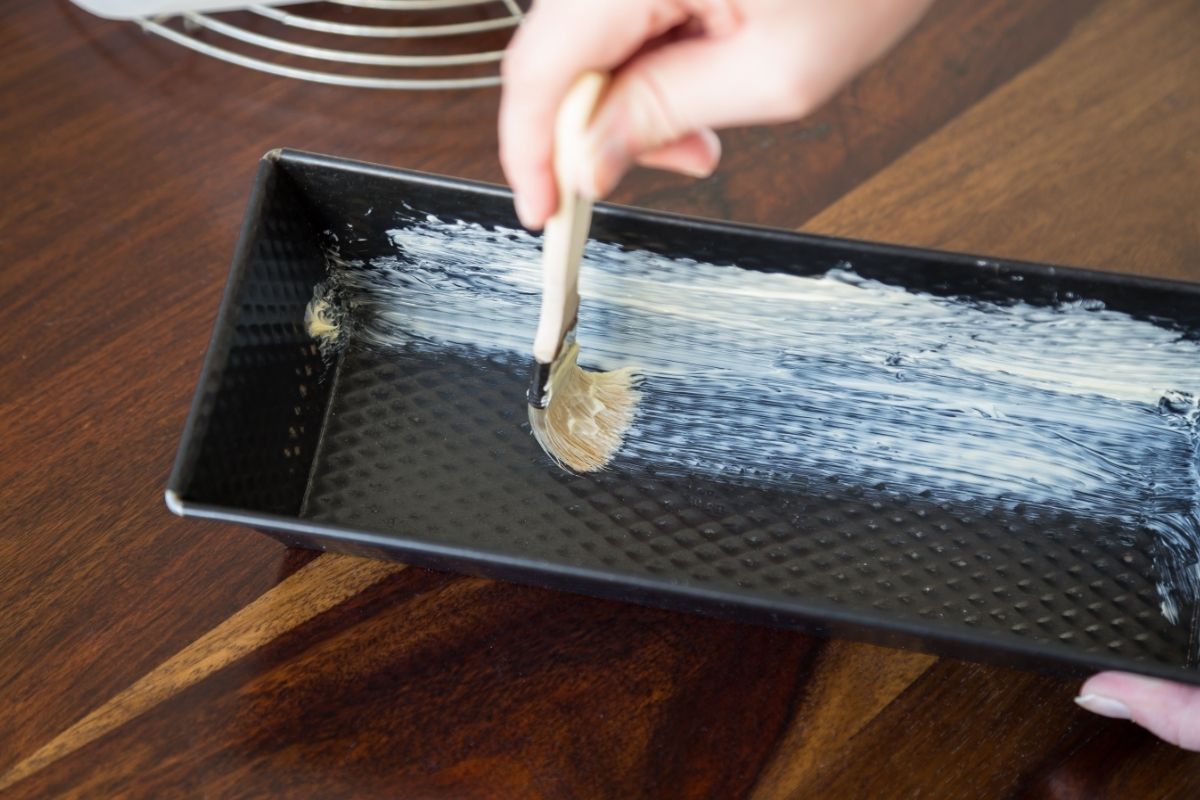
One way to grease your pan is with butter/shortening and flour.
- If you’re using butter to grease the pan, warm your butter and smooth an even layer around the bottom of the pan, and the sides of the pan.
- If you’re using shortening or vegetable shortening, we’d recommend using a paper towel to start greasing the whole pan. Spread an even, thin layer on the pans until you’ve finished greasing.
- Now, add in one tablespoon of all purpose flour. Move the baking pan around until the flour covers the pan. Tap off any excess flour.
If you’re unfamiliar with the term, shortening or vegetable shortening is 100% vegetable oil.
It has a higher melting point than butter and is a preferred method for many bakers.
However, some recipes may advise against shortening, so check your recipe before you grease your pan.
Grease With Cooking Spray
Greasing pans with cooking sprays is simple.
This method doesn’t even require instructions – simply spray a thin layer of your cooking sprays or nonstick baking spray across the whole pan, and you’re done.
A cooking spray or nonstick spray is particularly useful for greasing pans such as a bundt pan.
Bundt pans aren’t flat, and it can be tricky to grease the whole pan with other methods.
The Parchment Paper Technique
Using parchment paper can be a great way to grease a pan.
To do this, cut off a piece of parchment paper by fitting your parchment paper to the bottom of the ban, and tracing around it.
Grease the pan with a spray or grease such as vegetable oil or canola oil to prevent sticking at the bottom.
Once you’ve done this, you can also shake flour across the pan and place your parchment on the bottom of your pans, even if they’re not greased.
What Cooking Spray Can You Use To Grease A Pan?
The best cooking spray to grease a pan is usually a nonstick cooking spray, olive oil, coconut oil, or just plain old butter.
A nonstick spray can be easier to use than butter – it’s not as messy, and it’s easier to distribute an even layer across the cake pan.
If you grease your cake pan this way, you won’t need to use a paper towel, either.
Just spray your cake pan or cupcake pan and you’re ready to go! If necessary, you can brush your spray in a smooth layer along the pan to grease it evenly.
Should You Melt Butter To Grease A Pan?
Melted butter is usually the best greasing agent. If you try to grease a pan without melted butter, it can be hard to distribute across the cake pan or cupcake pan.
We’d always recommend melting your butter slightly before creasing your cake pan.
Melting your butter for as little as 30 seconds in the microwave should be enough to ensure you get enough grease on the whole pan.
Melted butter will also ensure your cake or your baked goods avoids any of that unwanted golden brown crust or unwanted stick.
Remember: some recipes will advise against certain agents. Before you start using a specific oil or grease in your pan, check the recipe first.
If the recipe calls for specific oil, we’d advise not changing it, especially for some temperamental recipes such as chocolate cake.
Not all recipes need parchment, either, so follow your recipe closely to avoid sticking.
Final Thoughts
Producing the best cake with the best flavor isn’t always easy.
We’ve all made a culinary disaster and messed up our batter, forgotten to add enough sugar, left our mix in the refrigerator for too long, or failed to follow the recipe correctly.
If you’re new to baking, these mistakes happen.
Your first cake may not turn out as good as you expected, but learning how to grease your pan correctly, and using the right oil for your recipe, will ensure your cake or brownies are bursting with flavor and beautifully moist every time.
So, if you’re ready to take the quality of your baked goods up a few notches, get your recipe, flour, loaf pan, pastry brush, and parchment paper at the ready, and learn how to grease a pan!

